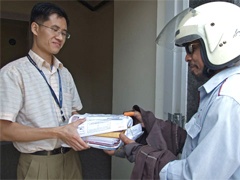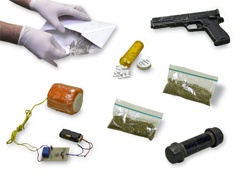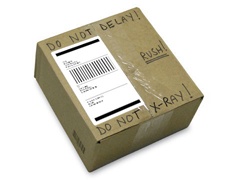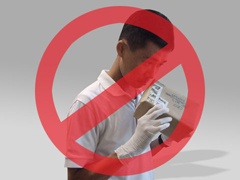 Mailroom screening is an important part of keeping your critical infrastructure facility secure. As an essential part of the community, you cannot afford to have any disruptions to your day to day operations.
Mailroom screening is an important part of keeping your critical infrastructure facility secure. As an essential part of the community, you cannot afford to have any disruptions to your day to day operations.
Whether you are a bank, correctional facility, school, or courthouse, your mailroom is responsible for processing incoming and outgoing mail. Ensuring operations around this are kept safe is imperative. With a proactive approach, you’ll be prepared to protect your facility, staff, and assets in case of an attack.
What Is The Threat?
 Depending on what type of industry you are in, you may be subject to different types of threats. At a prison facility, you may be looking for incoming drugs, weapons, and contraband. At a military facility, you may be on the lookout for explosive threats, biological threats (bacteria, viruses, parasites, and fungi), or chemical threats (poisonous vapors, aerosols, liquids, and solids).
Depending on what type of industry you are in, you may be subject to different types of threats. At a prison facility, you may be looking for incoming drugs, weapons, and contraband. At a military facility, you may be on the lookout for explosive threats, biological threats (bacteria, viruses, parasites, and fungi), or chemical threats (poisonous vapors, aerosols, liquids, and solids).
No matter the volume of letters and packages flowing through your mailroom, there is always a chance for a threat. Continual vigilance through mailroom screening is critical.
Recent Incidents
%20Hidden%20in%20Mailing%20Tube%20240x180.jpg?width=240&name=Improvised%20Explosive%20Device%20(IED)%20Hidden%20in%20Mailing%20Tube%20240x180.jpg) March 20, 2018 – An improvised explosive device shipped through a delivery service company in Texas detonated on a conveyor belt, injuring one employee at the facility. Several packages were discovered in the weeks prior putting civilians on alert for a serial bomber.
March 20, 2018 – An improvised explosive device shipped through a delivery service company in Texas detonated on a conveyor belt, injuring one employee at the facility. Several packages were discovered in the weeks prior putting civilians on alert for a serial bomber.
March 26, 2018 – Eleven (11) suspicious packages were received at various military, law enforcement, and intelligence facilities around the Washington, DC area including the White House. The packages contained potentially destructive devices with one X-ray scan indicating a GPS device and a fuse attached to explosive powder.
In addition to these two incidents, there have been numerous letters with suspicious powders and substances sent to various offices and facilities all around the world over the past year.
Safety Precautions to Observe
 To protect yourself, other staff, and the facility, you must follow some basic safety precautions when screening mail. Be sure to observe the following:
To protect yourself, other staff, and the facility, you must follow some basic safety precautions when screening mail. Be sure to observe the following:
- All deliveries must be directed to the mailroom only
- Limit access to the mailroom and never prop doors open
- Wear latex gloves, masks, and safety glasses
- No food or drink in the mailroom to prevent cross-contamination
- Always stay alert
Signs of a Suspicious Package
 Begin by physically inspecting the package or letter. Learn to look for distinct characteristics pointing to a suspicious package. Prominent warning signs include:
Begin by physically inspecting the package or letter. Learn to look for distinct characteristics pointing to a suspicious package. Prominent warning signs include:
- Unfamiliar or no return address
- Excessive postage, tape, wrapping, or string
- Stains, discolorations, crystallization, or leaking
- Strange odor
- Protruding wires
- Restrictive markings such as “Do not X-ray”
- Badly typed or written, misspelled words
- Rigid or bulky
- Lopsided or uneven box or package
Items should also be analyzed under X-ray or sampled using Explosives Trace Detection (ETD) technology as an additional layer of security. These screening technologies can be used to detect explosives and other prohibited items that a physical inspection cannot.
Responding to a Suspicious Package
 If a suspicious item is discovered:
If a suspicious item is discovered:
- Do not open it
- Do not examine it further
- Do not smell, touch, or taste it
- Do not shake or bump into it
- Wash your hands with soap and water
- Isolate the area where the item was discovered
- Report it to your supervisor immediately
- Follow your organization’s internal protocol
Conclusion
Mailroom screening can often be overlooked in critical infrastructure, but its importance has never been greater. Though it may be hard to imagine why your facility would ever be targeted, you must understand there is always a chance it could happen. Do you feel like mailroom screening is important? Let us know your thoughts below.
If you’d like to learn about our Mailroom Security Awareness training course, click here. For training related to X-ray or ETD screening equipment, click here.
